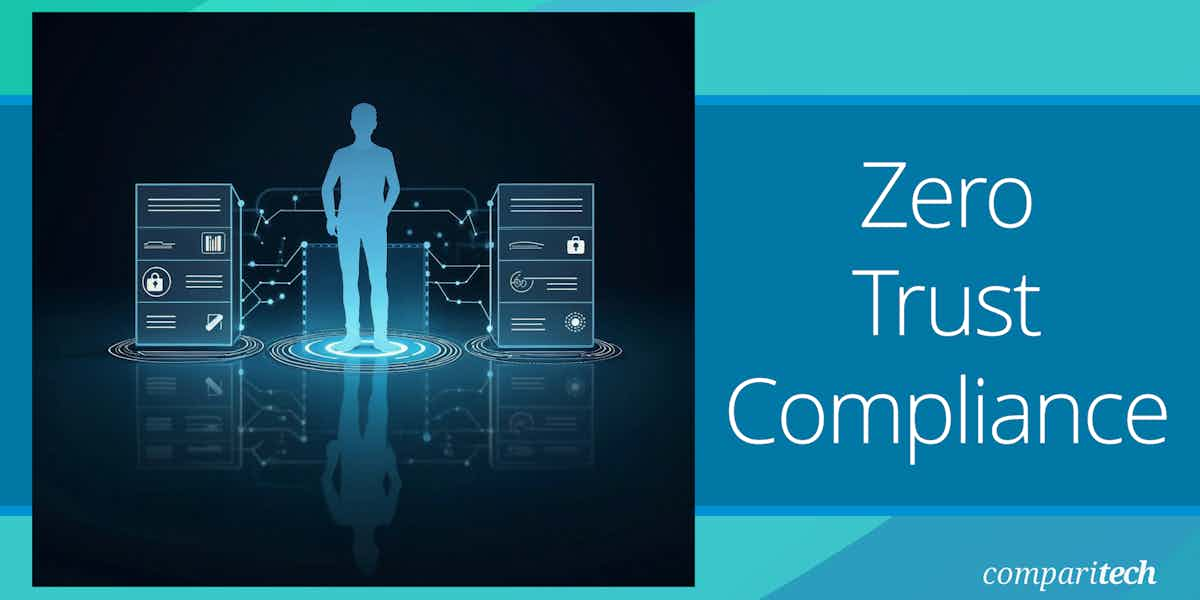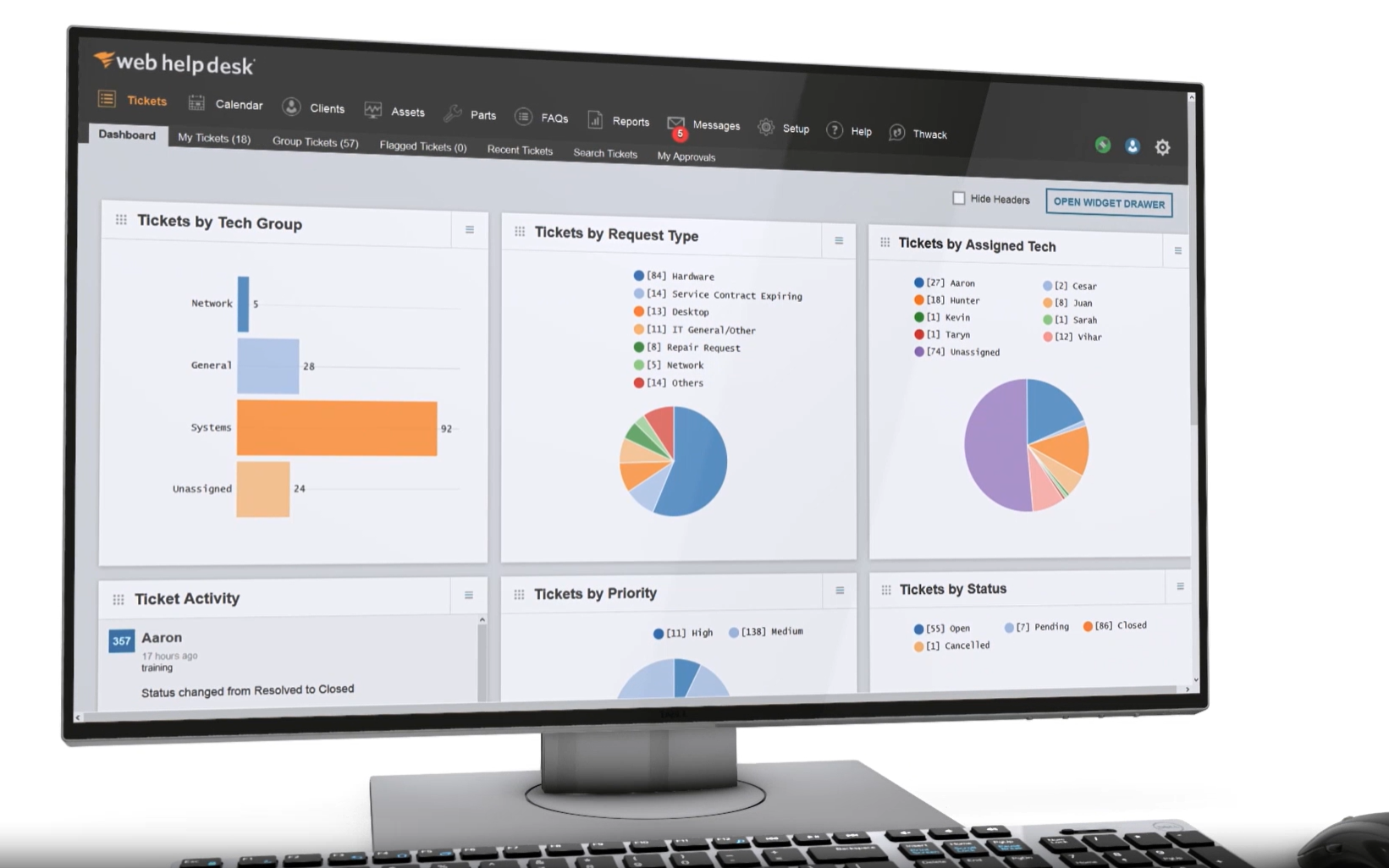Cyber threats are increasingly sophisticated and pervasive, and traditional security models that rely on perimeter-based defenses are no longer sufficient. The Zero Trust security model has emerged as a suitable framework to address these challenges. Zero Trust operates on the principle of “never trust, always verify,” ensuring that every access request is thoroughly vetted, regardless of its origin.
This approach not only enhances security but also plays a crucial role in meeting regulatory compliance requirements.
This article explores how Zero Trust aids in achieving compliance with standards like the General Data Protection Regulation (GDPR) and the Health Insurance Portability and Accountability Act (HIPAA), and provides examples of software that ensures alignment with these regulations.
In this guide, we will look at how a Zero Trust strategy can contribute to compliance achievement for the major data protection standards.
Core Principles of Zero Trust
Zero Trust is built on several core principles that differentiate it from traditional security models:
- Least Privilege Access: Users and devices are granted the minimum level of access necessary to perform their tasks. This limits the potential damage from compromised accounts or devices. By restricting access to only what is essential, organizations can reduce the attack surface and mitigate the risk of insider threats or accidental data exposure. Least privilege access ensures that even if credentials are compromised, the attacker has limited access to sensitive resources.
- Micro-Segmentation: Networks are divided into smaller, isolated segments to contain breaches and limit lateral movement within the network. This ensures that even if an attacker gains access to one segment, they cannot easily move to other parts of the network. Micro-segmentation is particularly effective in protecting sensitive data and critical systems, as it creates multiple barriers that an attacker must overcome.
- Continuous Verification: Access is continuously monitored and verified, ensuring that any changes in user behavior or device status are promptly addressed. This principle involves real-time analysis of access requests, user activity, and device health. Continuous verification helps detect anomalies and potential threats early, enabling swift response. It ensures that access privileges are dynamically adjusted based on the current context, such as user location, device health, and time of access.
- Assume Breach: The model operates under the assumption that breaches will occur, focusing on minimizing the impact and detecting threats early. This proactive approach ensures that security measures are designed to contain and mitigate breaches rather than solely prevent them. It shifts the focus from perimeter defense to internal threat detection and response. By assuming that attackers are already inside the network, organizations can better prepare for and respond to incidents.
- Data-Centric Security: Protection is focused on the data itself, ensuring that sensitive information is encrypted and access is tightly controlled. This principle emphasizes the importance of classifying data based on its sensitivity and applying appropriate security controls. Data-centric security ensures that even if data is accessed, it remains protected through encryption and access restrictions. It also involves monitoring data flows and ensuring that data is only accessed by authorized entities.
- Context-Aware Security: Access decisions are based on contextual information, such as user identity, device health, location, and time of access. This principle ensures that access is dynamically adjusted based on the current context, providing a more adaptive and responsive security posture. Context-aware security helps balance security and usability, ensuring that legitimate users can access resources while keeping attackers at bay.
By adhering to these principles, Zero Trust provides a comprehensive and adaptive security framework that enhances protection and supports regulatory compliance. These principles work together to create a strong defense against modern cyber threats, ensuring that organizations can protect their sensitive data and maintain the trust of their customers and stakeholders.
Zero Trust Architecture
Zero Trust Architecture (ZTA) is the implementation framework for Zero Trust principles. It typically includes the following components:
- Identity and Access Management (IAM): Ensures that only authenticated and authorized users and devices can access resources. IAM solutions provide mechanisms for user authentication, authorization, and lifecycle management. They often integrate with multi-factor authentication (MFA) to add an extra layer of security.
- Multi-Factor Authentication (MFA): Adds an additional layer of security by requiring multiple forms of verification. MFA typically combines something the user knows (password), something the user has (security token), and something the user has (biometric verification). This significantly reduces the risk of unauthorized access due to compromised credentials.
- Endpoint Security: Protects devices that access the network, ensuring they meet security standards. Endpoint security solutions include antivirus software, endpoint detection and response (EDR) tools, and device management platforms. These tools help ensure that only secure and compliant devices can access network resources.
- Network Security: Implements micro-segmentation and monitors network traffic for anomalies. Network security solutions include firewalls, intrusion detection and prevention systems (IDPS), and secure web gateways (SWG). These tools help enforce access controls and detect potential threats in real-time.
- Data Security: Encrypts data at rest and in transit, and controls access to sensitive information. Data security solutions include data loss prevention (DLP) tools, encryption software, and data classification platforms. These tools help ensure that sensitive data is protected from unauthorized access and breaches.
- Security Information and Event Management (SIEM): Provides real-time analysis of security alerts generated by network hardware and applications. SIEM solutions aggregate and analyze log data from various sources to detect and respond to security incidents. They play a crucial role in continuous monitoring and threat detection.
- Policy Enforcement Points (PEPs): These are the gatekeepers that enforce access policies based on the Zero Trust principles. PEPs can be implemented at various levels, including network, application, and data layers. They ensure that all access requests are evaluated against predefined policies before granting access.
- Policy Decision Points (PDPs): These components make access decisions based on the information provided by PEPs and other security tools. PDPs use contextual information, such as user identity, device health, and location, to make informed access decisions. They play a critical role in the continuous verification process.
By integrating these components, Zero Trust Architecture provides a comprehensive and adaptive security framework that enhances protection and supports regulatory compliance. This architecture ensures that security measures are consistently applied across all layers of the organization, from the network to the data, providing a rugged defense against modern cyber threats.
Regulatory Compliance and Zero Trust
Regulatory compliance refers to conformance with any industry, national, or international standards. In the case of Zero Trust, we are talking about the need to follow data protection standards.
The Importance of Compliance
Regulatory compliance is a critical aspect of modern business operations. Non-compliance can result in severe penalties, reputational damage, and loss of customer trust. Regulations like GDPR and HIPAA set stringent requirements for data protection, privacy, and security. Organizations must demonstrate that they have implemented appropriate measures to safeguard sensitive information.
How Zero Trust Aids in Compliance
Zero Trust aligns closely with the requirements of many regulatory frameworks. By implementing Zero Trust principles, organizations can more effectively meet compliance obligations. Below, we explore how Zero Trust aids in compliance with GDPR and HIPAA.
GDPR Compliance
The General Data Protection Regulation (GDPR) is a comprehensive data protection law that applies to organizations operating within the European Union (EU) and those handling EU citizens’ data. Key requirements include:
- Data Protection by Design and Default: Organizations must implement technical and organizational measures to ensure data protection principles are integrated into their operations.
- Data Minimization: Only the necessary amount of data should be collected and processed.
- Access Control: Access to personal data should be restricted to authorized personnel only.
- Data Breach Notification: Organizations must report data breaches to the relevant authorities within 72 hours.
Zero Trust and GDPR
- Data Protection by Design and Default: Zero Trust’s data-centric security approach ensures that data protection is integrated into every aspect of the architecture. Encryption, access controls, and continuous monitoring are inherent to Zero Trust.
- Data Minimization: By enforcing least privilege access, Zero Trust ensures that only the necessary data is accessible to users, aligning with GDPR’s data minimization principle.
- Access Control: Zero Trust’s continuous verification and IAM components ensure that only authorized users can access personal data, reducing the risk of unauthorized access.
- Data Breach Notification: Zero Trust’s assume breach principle and real-time monitoring capabilities enable organizations to detect and respond to breaches promptly, facilitating timely notification as required by GDPR.
HIPAA Compliance
The Health Insurance Portability and Accountability Act (HIPAA) sets standards for protecting sensitive patient health information in the United States. Key requirements include:
- Privacy Rule: Establishes standards for protecting individuals’ medical records and personal health information.
- Security Rule: Specifies administrative, physical, and technical safeguards to ensure the confidentiality, integrity, and availability of electronic protected health information (ePHI).
- Breach Notification Rule: Requires covered entities to notify affected individuals, the Department of Health and Human Services (HHS), and in some cases, the media, in the event of a breach.
Zero Trust and HIPAA
- Privacy Rule: Zero Trust’s least privilege access and data-centric security ensure that only authorized personnel can access ePHI, protecting patient privacy.
- Security Rule: Zero Trust’s continuous verification, micro-segmentation, and endpoint security align with HIPAA’s technical safeguards. Encryption and access controls protect ePHI, while real-time monitoring detects and responds to threats.
- Breach Notification Rule: Zero Trust’s assume breach principle and real-time monitoring enable organizations to detect breaches early, facilitating compliance with HIPAA’s breach notification requirements.
Examples of Zero Trust Software Ensuring Compliance
Several software solutions facilitate the implementation of Zero Trust principles and aid in meeting regulatory compliance. Below are examples of such software, categorized by their primary function.
Identity and Access Management (IAM)
- Okta This is a leading IAM solution that provides secure access management for users and devices. It supports multi-factor authentication (MFA), single sign-on (SSO), and lifecycle management, ensuring that only authorized users can access resources.
- GDPR Compliance: Okta’s access controls and MFA help organizations enforce least privilege access, aligning with GDPR’s data protection requirements.
- HIPAA Compliance: Okta’s secure access management ensures that only authorized personnel can access ePHI, supporting HIPAA’s privacy and security rules.
- Microsoft Entra ID (Azure AD): Entra ID is a cloud-based IAM service that provides identity and access management capabilities. It integrates with Microsoft’s security solutions to offer comprehensive protection.
- GDPR Compliance: Azure AD’s conditional access policies and MFA help organizations enforce access controls, supporting GDPR’s data protection requirements.
- HIPAA Compliance: Azure AD’s integration with Microsoft’s security solutions ensures that ePHI is protected, aligning with HIPAA’s technical safeguards.
Endpoint Security
- CrowdStrike Falcon This endpoint protection platform uses artificial intelligence (AI) to detect and prevent threats. It provides real-time visibility and protection for endpoints.
- GDPR Compliance: CrowdStrike’s endpoint protection ensures that devices accessing personal data are secure, supporting GDPR’s data protection requirements.
- HIPAA Compliance: CrowdStrike’s real-time threat detection and response capabilities help protect ePHI, aligning with HIPAA’s security rule.
- Carbon Black A cloud-native endpoint protection platform that provides advanced threat detection and response capabilities. It offers continuous monitoring and protection for endpoints.
- GDPR Compliance: Carbon Black’s endpoint security ensures that devices accessing personal data are protected, supporting GDPR’s data protection requirements.
- HIPAA Compliance: Carbon Black’s continuous monitoring and threat detection capabilities help protect ePHI, aligning with HIPAA’s security rule.
Network Security
- Cisco Secure Access Cisco’s SASE is a cloud-based security solution that combines network security functions with WAN capabilities. It provides secure access to applications and data from any location.
- GDPR Compliance: The SASE’s secure access and micro-segmentation capabilities help protect personal data, supporting GDPR’s data protection requirements.
- HIPAA Compliance: Cisco’s secure access and continuous monitoring capabilities help protect ePHI, aligning with HIPAA’s security rule.
- Zscaler Private Access (ZPA) The Zscaler ZPA system is a cloud-based zero trust network access (ZTNA) solution that provides secure access to internal applications. It enforces least privilege access and continuous verification.
- GDPR Compliance: Zscaler ZPA’s least privilege access and continuous verification help protect personal data, supporting GDPR’s data protection requirements.
- HIPAA Compliance: The ZPA’s secure access and continuous monitoring capabilities help protect ePHI, aligning with HIPAA’s security rule.
Data Security
- Varonis A data security platform that provides visibility and control over sensitive data. It offers data classification, access controls, and threat detection capabilities.
- GDPR Compliance: The platform’s data classification and access controls help organizations enforce data protection requirements, supporting GDPR compliance.
- HIPAA Compliance: This tool’s data security capabilities help protect ePHI, aligning with HIPAA’s privacy and security rules.
- Symantec Data Loss Prevention (DLP) Now provided by Broadcom, this data security solution helps organizations prevent data breaches and ensure compliance. It provides data discovery, monitoring, and protection capabilities.
- GDPR Compliance: Symantec DLP’s data discovery and monitoring capabilities help organizations protect personal data, supporting GDPR compliance.
- HIPAA Compliance: Symantec DLP’s data protection capabilities help safeguard ePHI, aligning with HIPAA’s privacy and security rules.
Security Information and Event Management (SIEM)
- Splunk Enterprise Security This data analyzer has both on premises and cloud-hosted deployment options. It is a SIEM solution that provides real-time visibility and threat detection. The package offers advanced analytics and incident response capabilities.
- GDPR Compliance: Splunk’s real-time monitoring and threat detection capabilities help organizations detect and respond to data breaches, supporting GDPR compliance.
- HIPAA Compliance: Splunk’s incident response capabilities help organizations protect ePHI, aligning with HIPAA’s security rule.
- IBM QRadar A SIEM solution that provides comprehensive security intelligence and threat detection. It offers advanced analytics and incident response capabilities.
- GDPR Compliance: IBM QRadar’s real-time monitoring and threat detection capabilities help organizations detect and respond to data breaches, supporting GDPR compliance.
- HIPAA Compliance: IBM QRadar’s incident response capabilities help organizations protect ePHI, aligning with HIPAA’s security rule.
Conclusion
The Zero Trust security model offers a comprehensive framework for enhancing cybersecurity and meeting regulatory compliance requirements. By implementing Zero Trust principles, organizations can more effectively protect sensitive data, enforce access controls, and detect and respond to threats. This alignment with regulatory requirements is particularly evident in the context of GDPR and HIPAA, where Zero Trust’s data-centric security, continuous verification, and assume breach principles directly support compliance efforts.
Software solutions that facilitate Zero Trust implementation, such as Okta, CrowdStrike Falcon, Cisco SASE, Varonis, and Splunk Enterprise Security, play a crucial role in ensuring alignment with regulatory standards. These tools provide the necessary capabilities to enforce least privilege access, protect endpoints, secure networks, safeguard data, and monitor for threats, thereby helping organizations achieve and maintain compliance.
As cyber threats continue to evolve, the adoption of Zero Trust will become increasingly important for organizations seeking to protect their data and meet regulatory obligations. By embracing Zero Trust, organizations can build a more resilient security posture and demonstrate their commitment to data protection and privacy.




